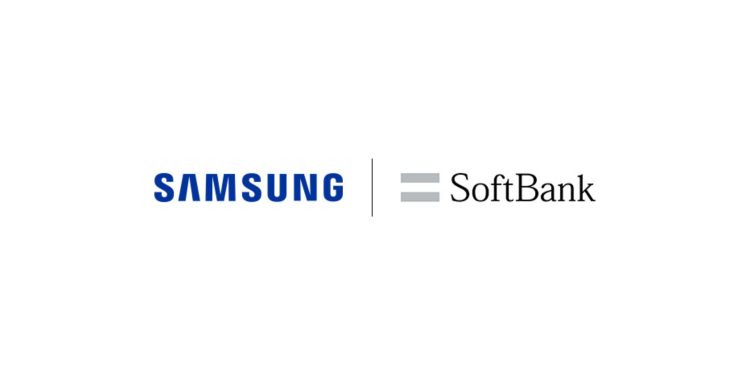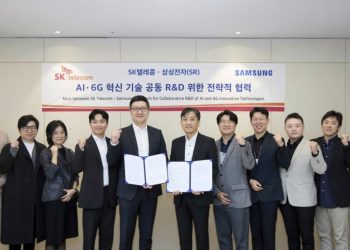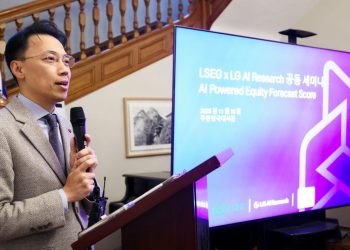The strategic collaboration between the two tech giants aims to merge artificial intelligence and next-generation network technologies, accelerating the path to smarter, more adaptive communications systems.
Samsung Electronics and SoftBank Corp. have entered into a Memorandum of Understanding (MoU) to jointly research and develop next-generation communication technologies, including 6G, AI-powered radio access networks (AI-RAN), and Large Telecom Models (LTM).
The partnership seeks to combine Samsung’s expertise in base station technology with SoftBank’s strength in AI-driven research to accelerate network evolution. Through the use of AI, the companies plan to improve radio access orchestration, enhance system efficiency, and deliver a more seamless user experience.
Both firms view this collaboration as a cornerstone for the next phase of telecom innovation, aligning closely with the global 6G roadmap.
Research Focus: Four Pillars of Innovation
The partnership will concentrate on four strategic domains that define the future of mobile communications:
- 6G: Development of ultra-high-speed, low-latency networks using advanced frequency bands such as the 7GHz spectrum, a leading candidate for 6G.
- AI for RAN: Applying artificial intelligence to enhance radio access performance, automate network operations, and improve energy efficiency.
- AI and RAN Integration: Exploring AI-RAN orchestration — the convergence of AI workloads and RAN systems — to enable real-time optimization of network traffic and resources.
- Large Telecom Model (LTM): Leveraging SoftBank’s generative AI-powered model trained on massive network datasets to simulate real-world conditions, optimize deployments, and predict system behavior.
By merging these areas, Samsung and SoftBank aim to create smarter, adaptive, and more autonomous communication systems that can scale to the complex demands of the 6G era.
AI-RAN: Bridging Artificial Intelligence and Network Operations
Under the AI for RAN framework, the companies will investigate how machine learning and generative AI can strengthen the efficiency of wireless networks.
AI-RAN technologies are designed to manage radio access networks dynamically, analyzing traffic patterns and adjusting parameters in real time. This allows operators to optimize signal quality, boost capacity, and minimize energy consumption.
The collaboration will also explore AI-RAN orchestration, which enables both AI workloads and RAN operations to function on shared infrastructure. This integration could reduce deployment costs and pave the way for self-optimizing networks that automatically adapt to user demands and environmental conditions.
“Through this collaboration with SoftBank, we aim to define meaningful use cases for both operators and end users while securing key technologies for future commercialization,” said JinGuk Jeong, Executive Vice President and Head of the Advanced Communications Research Center (ACRC) at Samsung Research.
“Building on our advanced expertise in AI-RAN and 6G, Samsung will continue to lead innovation in next-generation communications”
LTM and Generative AI in Telecom Networks
A key component of the collaboration is SoftBank’s Large Telecom Model (LTM) — an advanced generative AI platform developed using the operator’s vast network data.
The LTM is designed to predict performance trends, optimize deployment strategies, and automate fault detection and maintenance. By combining Samsung’s base station capabilities with SoftBank’s AI engine, the partnership will test the model’s potential to improve network reliability and operational efficiency.
Field tests will also evaluate AI’s role at the physical layer of communication systems, such as data transmission and signal interpretation. The results could demonstrate AI’s ability to reduce latency, increase spectral efficiency, and improve coverage — all critical for 6G infrastructure.
Executive Insights: A Shared Vision for the Future
Both companies have emphasized the long-term vision behind their collaboration.
“By combining our advanced expertise, we will accelerate the realization of next-generation networks that evolve to become more efficient and highly reliable through AI-RAN,” said Hideyuki Tsukuda, Executive Vice President and CTO of SoftBank Corp.
“SoftBank remains committed to building the social infrastructure of the future — one where AI and humans coexist.”
The partnership also aligns with the goals of the AI-RAN Alliance, founded in 2024 by Samsung, SoftBank, Nokia, and Ericsson to advance AI applications in telecom networks. The alliance aims to standardize AI-RAN frameworks, improve interoperability, and promote cross-industry collaboration.
Industry Context: Asia’s Leadership in AI-RAN Development
The timing of the Samsung–SoftBank collaboration coincides with a global surge in AI-driven telecom innovation.
- SoftBank has already entered into similar research partnerships with Nokia and Ericsson, focusing on AI prototypes designed to improve network throughput and reduce latency.
- The company’s transformer-based neural models, inspired by ChatGPT architecture, have shown throughput improvements of up to 31% in simulation tests.
- Its ongoing work with NVIDIA on the AI Aerial platform has demonstrated real-world performance gains in AI-based 5G optimization.
- Meanwhile, in Korea, KT Corp. has begun testing AI-RAN features such as multi-user MIMO and channel estimation on live 5G networks — making it the first domestic operator to do so.
Together, these initiatives show how Asia’s telecom leaders are setting the global benchmark for integrating AI into network infrastructure, moving rapidly from research to real-world deployment.
The Road Ahead: Toward Intelligent, Autonomous Networks
Looking forward, the Samsung–SoftBank collaboration reinforces a shared commitment to shaping the foundations of 6G and AI-integrated network systems.
Samsung will continue its leadership through the Advanced Communications Research Center (ACRC) and plans to host the Silicon Valley Future Wireless Summit later this year. The event will convene global experts from academia, industry, and government to discuss AI-RAN innovation and next-generation network frameworks.
As global discussions around 6G spectrum allocation and standardization intensify, the collaboration highlights a broader trend — telecom infrastructure is no longer just about speed or capacity, but about intelligence, adaptability, and autonomy.







